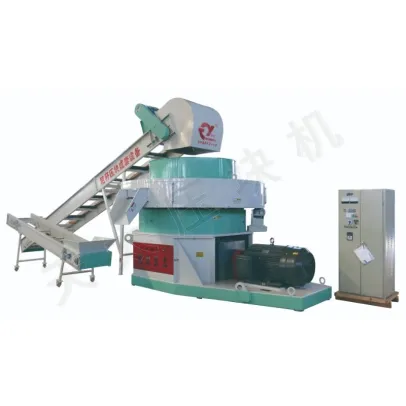Types and differences of straw briquetting machine
Straw briquetting machines have emerged as an eco-friendly solution for converting straw, a byproduct of agriculture, into a valuable energy source. These machines come in various types, each offering distinct features and functionalities. Understanding the types and differences among them is crucial for selecting the most suitable option for specific requirements.
Types of Straw Briquetting Machines:
Mechanical Briquetting Machines: Mechanical briquetting machines operate through a mechanical process involving compression. These machines utilize high pressure to compact straw into briquettes without the need for binders or additives. They typically consist of a hydraulic or mechanical press that exerts pressure on the straw, forcing it into a die to form briquettes. Mechanical briquetting machines are known for their simplicity, reliability, and high production capacity. They are suitable for large-scale operations and offer a cost-effective solution for processing straw into briquettes.
Screw Extruder Briquetting Machines: Screw extruder briquetting machines utilize a screw mechanism to extrude straw through a heated chamber, where it is compacted and formed into briquettes. These machines are versatile and can process various types of biomass materials, including straw. They offer precise control over the briquette size and density, making them suitable for applications where uniformity is essential. Screw extruder briquetting machines are favored for their efficiency, ease of operation, and ability to produce briquettes with consistent quality.

Differences Among Straw Briquetting Machines:
Operating Principle: The primary difference among straw briquetting machines lies in their operating principles. Mechanical briquetting machines rely on hydraulic or mechanical pressure to compress straw into briquettes, while screw extruder briquetting machines use a screw mechanism to extrude and compact straw.
See also:What is the most dependable dump truck?
Corn Mill Indiana Grain Mills for sale
The Benefits of Using Plating Mask Fabrication Process
How to Reseal Shrink Wrap Easily
5 Ways to Improve MSW Recycling Efforts
Revolutionizing Transportation: DIY EV Battery Pack Assembly?
10 Questions You Should Know about Electroless Nickel Plating Machine
Production Capacity: Another notable difference is in the production capacity of the machines. Mechanical briquetting machines typically offer higher production capacities compared to screw extruder machines. This makes mechanical briquetting machines suitable for large-scale production, whereas screw extruder machines are preferred for smaller-scale operations or applications requiring flexibility in production volume.
Briquette Quality and Uniformity: The method of compression employed by each type of machine also affects the quality and uniformity of the resulting briquettes. Mechanical briquetting machines produce dense and uniform briquettes due to the high pressure exerted during the compression process. In contrast, screw extruder machines can also produce high-quality briquettes but may require additional adjustments to achieve uniformity in size and density.
Energy Efficiency: Energy efficiency is another factor that distinguishes Biomass straw briquetting machines. While both types of machines are relatively energy-efficient compared to traditional methods of straw disposal, screw extruder briquetting machines typically require less energy to operate due to their continuous extrusion process. Mechanical briquetting machines may consume more energy during the compression phase but offer higher production capacities, resulting in overall energy efficiency.
Conclusion: Straw briquetting Production Lines play a vital role in converting straw, an agricultural byproduct, into a valuable energy source. Understanding the types and differences among these machines is essential for selecting the most suitable option based on production requirements, briquette quality, and energy efficiency. Mechanical briquetting machines and screw extruder machines are two common types, each offering unique features and functionalities. By considering factors such as operating principle, production capacity, briquette quality, and energy efficiency, businesses and industries can make informed decisions when investing in straw briquetting technology.
What are the Key Questions to Ask When Ordering Waste Sorting Machine Price?
Revolutionizing Plating in Myanmar: Everything You Need to Know About Plating Machines
10 Questions You Should Know about Plastic Wrap Machine
How Does SEO Optimization Work?
What is the best barrel plating equipment for Iran?
Key Questions to Ask When Ordering Shrink Wrap Machinery
Revolutionizing Industries with Advanced Balor Machines
- Previous: What does a cultivator do?
- Next: None





![Key Questions to Ask When Ordering [Product/Service]" - MBT Waste Treatment Edition Key Questions to Ask When Ordering [Product/Service]" - MBT Waste Treatment Edition](https://images.techoeidm.com/upload/automate/20240709/2b4ffcb8ebe3fbd8b30eb1aa1d54ef37.png)



